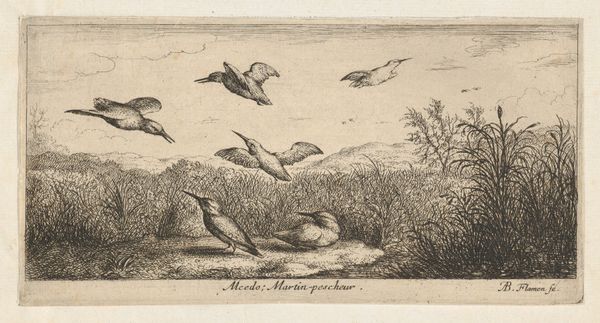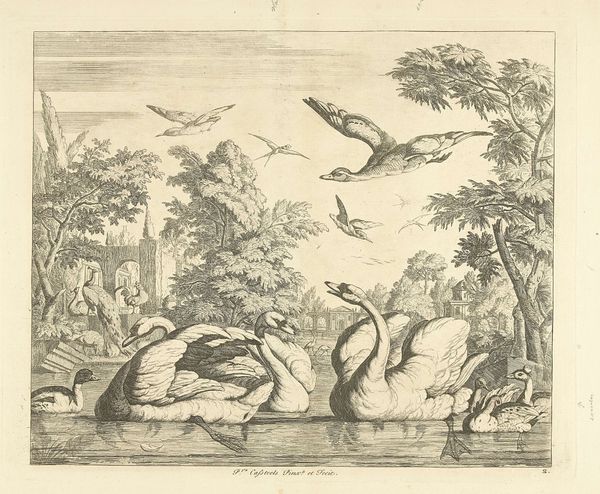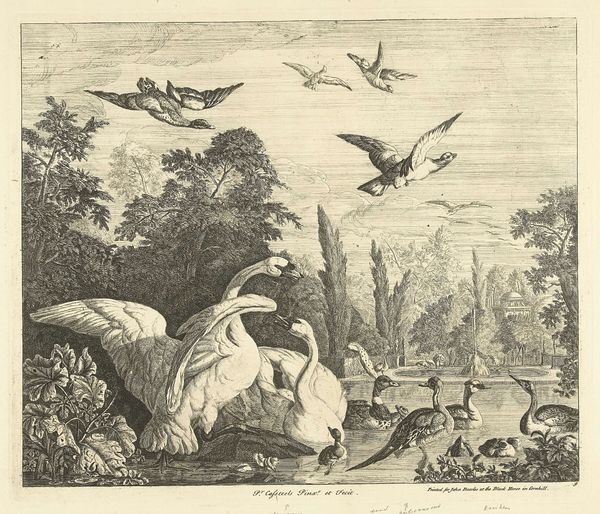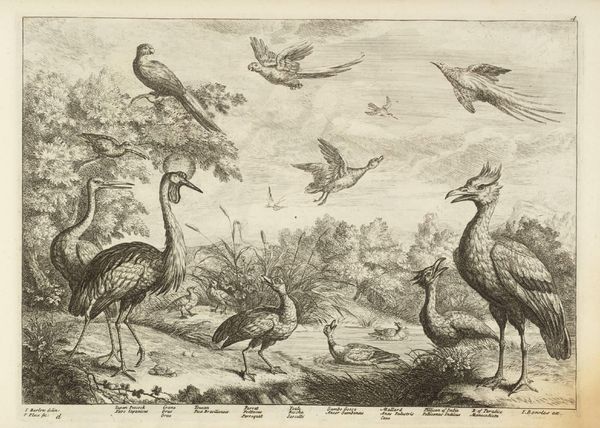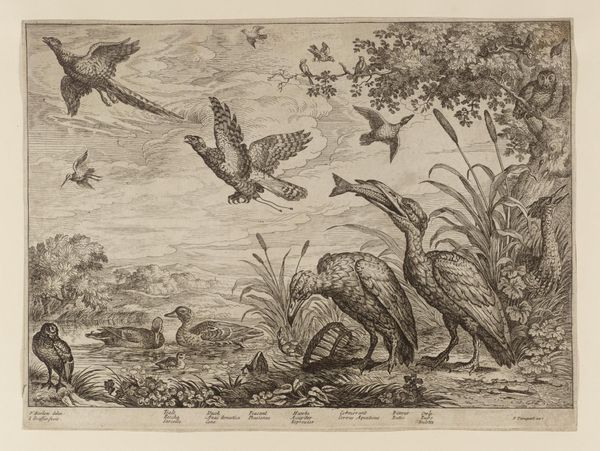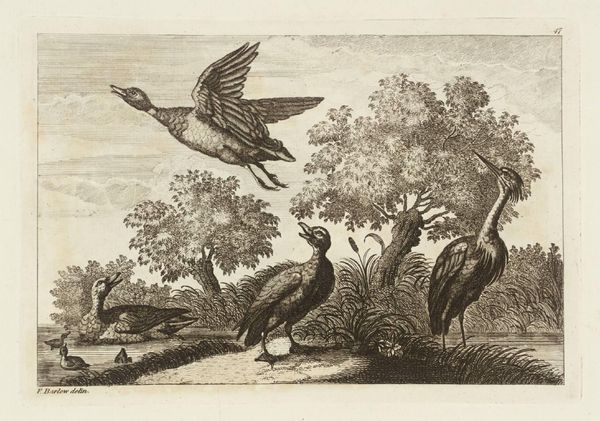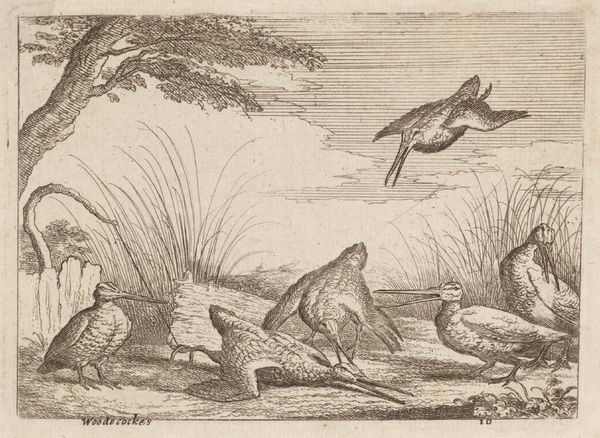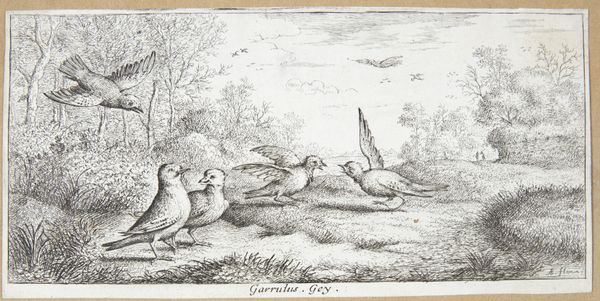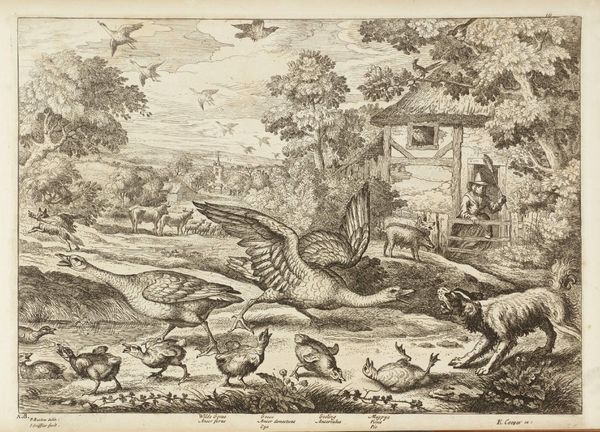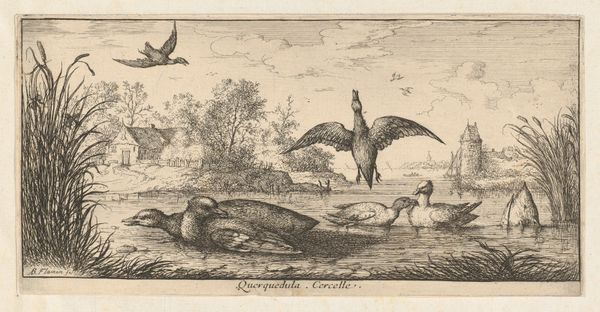
Vanellus, Vanneau (The Lapwing), from "Livre d'Oyseaux" (Book of Birds) 1650 - 1665
0:00
0:00
drawing, print, etching, engraving
#
drawing
#
baroque
#
animal
# print
#
etching
#
landscape
#
bird
#
engraving
Dimensions: Sheet: 4 x 7 15/16 in. (10.2 x 20.2 cm)
Copyright: Public Domain
Curator: Vanellus, Vanneau—or, the Lapwing—by Albert Flamen. Created sometime between 1650 and 1665 using etching and engraving techniques. It's quite intricate for such a small print, wouldn't you say? What are your first thoughts? Editor: It feels almost like a quick sketch, but the details on the birds’ feathers are so delicate! The way he used the etching to create different textures in the landscape is also striking. I'm curious, how does this piece fit into the art of its time? Curator: I think it's important to look at the production of prints like this in 17th-century France. Consider Flamen's role; he was an etcher and engraver, essentially a skilled craftsman catering to a growing market for accessible art. This wasn't about unique masterpieces, but rather a wider distribution of imagery. Think about the socioeconomic implications of producing multiples, not just for elite collectors, but possibly for a burgeoning middle class. What labor would it entail? Editor: So, instead of focusing solely on Flamen's artistic genius, we're also thinking about him as part of a workshop and broader economic system? I’d never thought of art this way. Does his choice of birds and landscape have any specific meaning when we view it from a materialist perspective? Curator: Absolutely. Bird imagery at this time was often linked to notions of freedom and nature, idealized concepts removed from the realities of urban life and industrial labor. But even those associations have a material component. Did Flamen, who died relatively young and whose career never took off, profit from these idealized projections of nature, from the printing, selling, and consuming of his engravings? What can these historical details reveal to us about how art reflects broader social power dynamics and maybe even individual aspiration? Editor: That's fascinating. It changes how I see the image. Now I'm not just looking at pretty birds, but at the social and economic currents that made this print possible. Curator: Exactly. By considering the materials, methods, and market forces involved, we can gain a much richer understanding of art's place in society. I wonder what implications can that approach offer for today’s art scene?
Comments
No comments
Be the first to comment and join the conversation on the ultimate creative platform.
